Depth of Field in Photo Manipulation
 There are a number of compositional tools available to the visual artist when creating the illusion of depth and space. The human eye perceives the environment in a certain way; replicating these conditions can help produce more dynamic, believable work. An understanding of ‘foreground’ / ‘background’ elements and focal sharpness will increase visual engagement and give your art a definitive ‘punch’.
There are a number of compositional tools available to the visual artist when creating the illusion of depth and space. The human eye perceives the environment in a certain way; replicating these conditions can help produce more dynamic, believable work. An understanding of ‘foreground’ / ‘background’ elements and focal sharpness will increase visual engagement and give your art a definitive ‘punch’.
Depth of Field
The term ‘Depth of Field’ (DOF) is largely used in photography, which describes ‘the distance between the nearest and farthest objects in a scene that appear acceptably sharp in an image‘. Depth of field in photography can be controlled by the aperture, the focal length of the lens and camera to subject distance.
In photo manipulation, we can use the principles of DOF to create compositional punch, differentiate foreground elements from background, and highlight importance.
This photograph is a clear example of Depth of Field: one flower is sharp as it is within the focal range – whereas the flowers in the background are increasingly blurred based on their distance from the lens.
DOF by dhbpranav, DeviantArt.
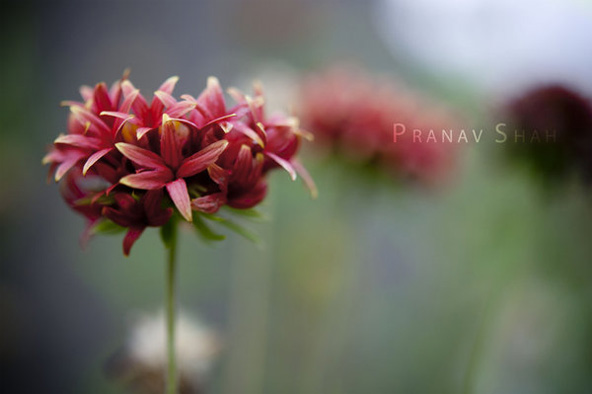
Foreground, Mid-ground & Background
In the visual arts the idea of foreground, mid-ground and background elements can help create a sense of heirachy and depth in an image. Lower objects, or elements perceived as directly in front of us are in the foreground. Objects at a medium distance are perceived as mid-ground; also in the middle of the frame. Objects farthest from us in the background, are usually higher in the frame. Background elements are less clear (as seen with DOF) and their colours are less intense than those in the foreground and mid-ground.
The Temple of Jupiter Panellenius, Exhibited 1816. Oil on canvas. JMW Turner.
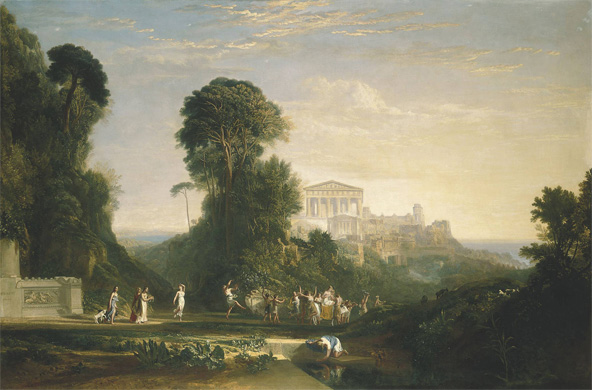
Landscape art throughout the ages provides exemplary examples of these principles as there is largely a broad range of elements in a compostion. Of particular note is the sharpness and strength of colour within the foreground objects, elements become progressively less focused and saturated the further back they go.
The Masters of the Renaissance also employed excellent spatial technique in their work:
The Virgin and Child with Saint Anne, circa 1508. Leonardo da Vinci.

Principles in Action
As there are a multitude of compositing and digital painting tools available in Photoshop – exciting work with a true sense of depth can be created. With the photographic and painted examples in mind, check out these stellar photo manipulation works that imply a sense of depth using the DOF and foreground / background principles:
Oracle by Karezoid, DeviantArt
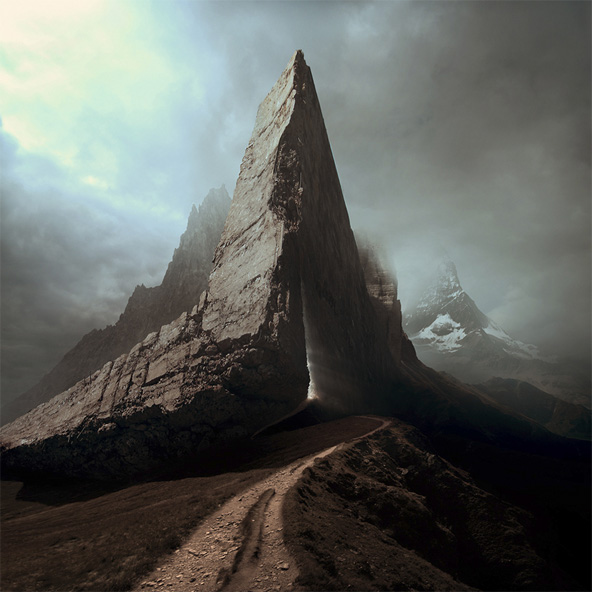
Blexen by Karezoid, DeviantArt

Day Watch Poster by Lagutin, DeviantArt
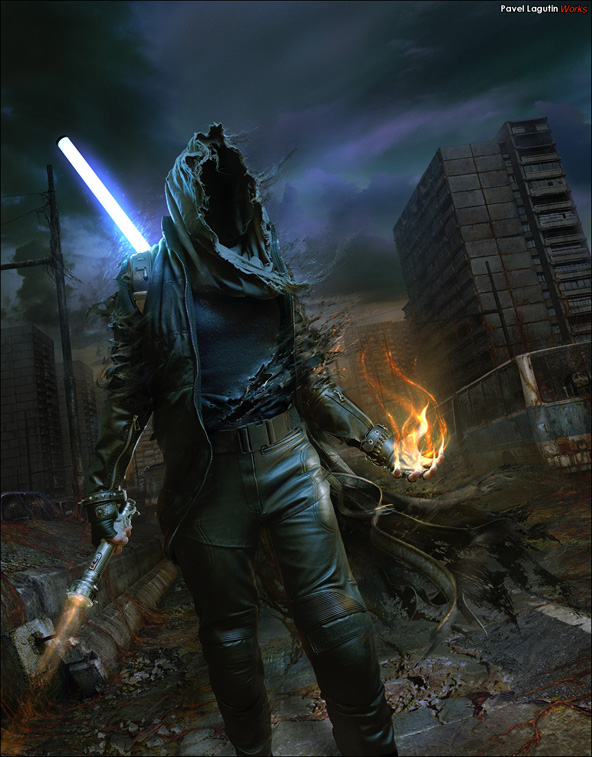 Take no Prisoners by MadSpike, DeviantArt
Take no Prisoners by MadSpike, DeviantArt

Hellhound by MadSpike, DeviantArt
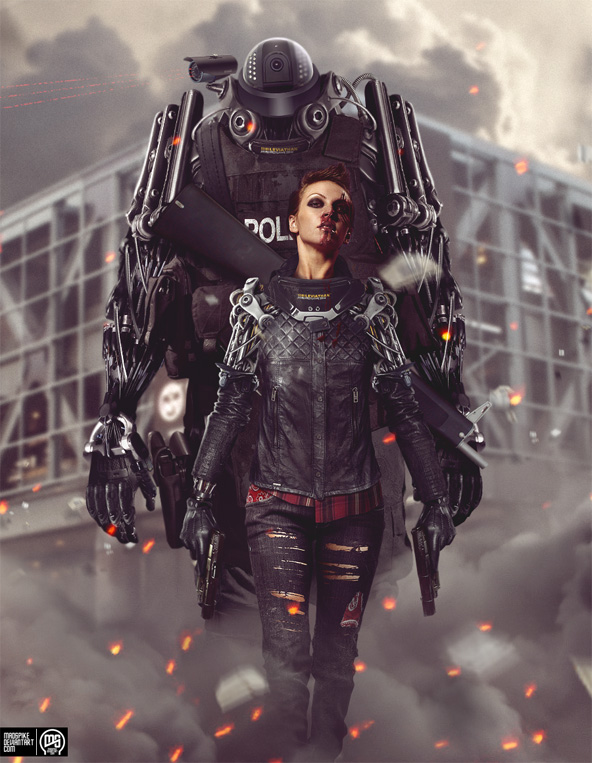
Balance of Life by m4gic, DeviantArt
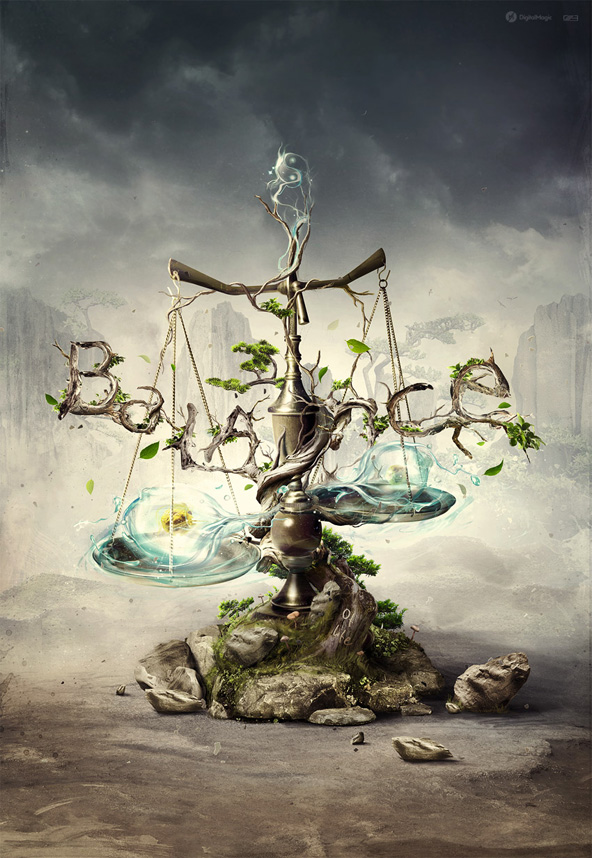
Review
You can avoid lifeless composition and introduce a sense of depth to your work by trying out some of the techniques above. There are a number of methods that can be employed in Photoshop to achieve the desired results, including Gaussian Blur and Saturation commands – experiment and see what works. Once you get beyond the ‘technical’ hurdles of graphics software, you’ll find that you spend more and more time observing the works of natural media to achieve those fine-art results. Enjoy!
Please feel free to share your own techniques and observations in the comments section below.
Conzz ![]()
Follow on Twitter >> @Conzpiracy
Great article man, I endorse this method. One of my favorite things to do:)
Thanks for the endorsement mate! It actually took me a fair while to get my head around some of these factors, so Im glad to share the info now
Always nice post. What I like from this site that it always try to keep the post simple. Right to the point. Easy to understand, and of course really nice tips Well done sir!
Well done sir!
Thanks Bady, glad you find the articles clear and accessible
llove this it s my live
I think you meant to say “desaturated” instead of saturated above under the temple painting.
Great write up nonetheless thanks!